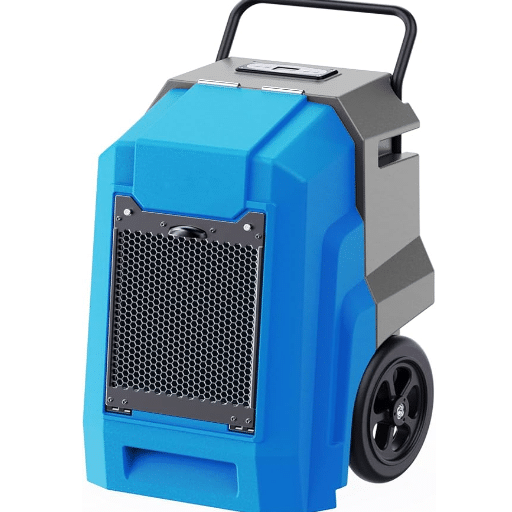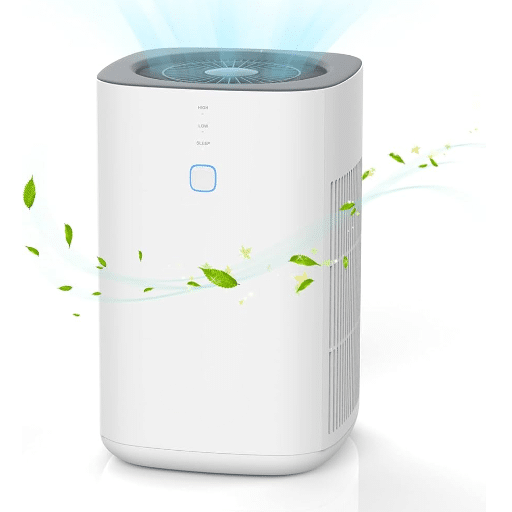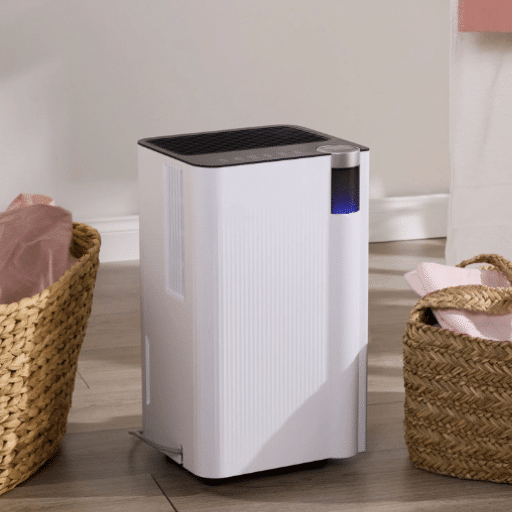Keeping your home free from excess moisture is essential for maintaining a healthy living environment, and your crawl space is no exception. Often overlooked, this area plays a critical role in regulating your home’s overall air quality and structural integrity. However, without proper humidity control, it can become a breeding ground for mold, mildew, and even pests, leading to costly repairs and health risks. That’s where a crawl space dehumidifier comes in. But how much does it cost to install one? What factors influence the price, and is it worth the investment? In this guide, we’ll explore everything you need to know—from the costs and benefits to expert tips on installation—so you can make a well-informed decision for your home. Whether you’re a homeowner facing persistent moisture problems or simply looking to safeguard your property, this article has you covered.
What Are the Cost Factors for a Crawl Space Dehumidifier?
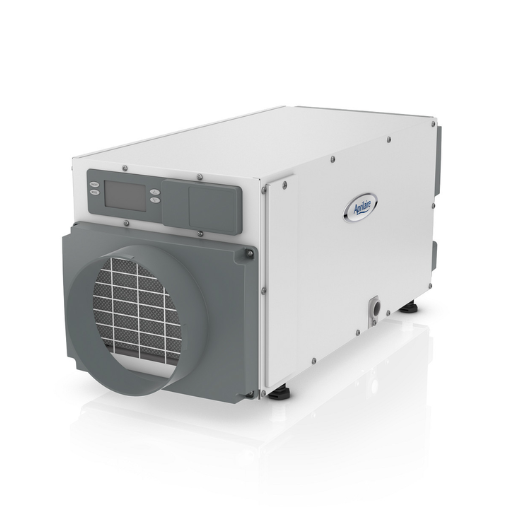
- Dehumidifier Type – The price varies depending on whether you choose a standard portable unit or a high-capacity, built-in unit designed specifically for crawl spaces. High-capacity models typically cost more but are more effective for larger spaces.
- Capacity and Efficiency – Units with higher moisture removal capacity (measured in pints per day) and energy efficiency ratings generally come at a higher initial cost but can save on energy expenses in the long run.
- Installation Requirements – Professional installation can add to the overall cost, especially for units requiring ductwork or custom drainage systems.
- Additional Features – Features like humidistats, auto-drain options, and advanced filtration systems can increase the price but may provide added convenience and performance.
- Maintenance Costs – The need for periodic filter replacements and general upkeep should also be considered when evaluating the total cost of ownership.
How Does Dehumidifier Installation Cost Affect Overall Expenses?
The initial installation cost of a dehumidifier can significantly affect the overall expenses associated with managing indoor humidity. The cost of professional installation typically ranges from $200 to $500, depending on factors such as the type of dehumidifier, the size of the unit, and the complexity of the installation process. For example, installing a whole-house dehumidifier might require modifications to your HVAC system, which could increase labor costs. Portable dehumidifiers, on the other hand, often require little to no professional installation, thus reducing upfront expenses.
It’s also important to consider whether additional electrical work is required. Some high-capacity dehumidifiers may need dedicated circuits, which could add $100 to $300 to the installation costs. Furthermore, installing drainage systems for continuous operation might raise the overall investment but can save time and effort in manual water disposal.
When evaluating these costs, keep in mind that proper installation is critical for maximizing the efficiency and durability of the unit. A poorly installed dehumidifier may lead to inefficiency, higher energy bills, or even damage to your home over time. Factoring in installation costs as part of the total expense allows for a more accurate assessment of the long-term affordability of dehumidification solutions.
What Influences the Price of a Crawl Space Dehumidifier?
The price of a crawl space dehumidifier is influenced by several key factors, ranging from the unit’s capacity to its technological features and materials used. One of the primary determinants is the dehumidifier’s capacity, often measured in pints of moisture removed per day. Higher-capacity units, which can remove 70 pints or more, are typically more expensive, ranging from $800 to $2,000, while smaller units may cost between $300 and $700.
Energy efficiency is another significant factor. Dehumidifiers with ENERGY STAR certification may carry a higher initial price but can lead to long-term savings by reducing electricity costs. On average, energy-efficient dehumidifiers consume about 15% less energy compared to standard models. Features like built-in pumps for drainage, advanced controls, and smart technology (such as Wi-Fi connectivity) can also increase the cost but add convenience and functionality.
The build quality and materials used—such as corrosion-resistant components designed to endure damp environments—often contribute to price differences. Units specifically designed for crawl spaces are commonly made with durable materials that prevent rust and extend the lifespan of the product.
Lastly, brand reputation and warranty terms significantly impact the price. Premium brands often charge more due to their emphasis on quality and extended warranties, which can range from 5 to 10 years, ensuring long-lasting performance. By carefully evaluating these factors, homeowners can choose a dehumidifier that aligns with their budget and long-term needs.
Are Energy Star Models Worth the Investment?
Energy Star models are highly regarded because of their efficiency and potential cost-saving benefits, making them a worthwhile investment for many homeowners. These appliances meet strict energy efficiency standards set by the U.S. Environmental Protection Agency, using an average of 20-30% less energy than non-certified models. For example, a standard household dehumidifier might consume approximately 700 watts, while an Energy Star-rated equivalent can lower that to around 500 watts without compromising performance. Over time, this energy reduction translates into significant savings on utility bills—on average, users can save approximately $35 to $50 annually, depending on usage and local energy rates.
Beyond cost savings, investing in Energy Star models helps reduce carbon emissions, contributing to a more sustainable environment. For instance, statistics indicate that widespread adoption of Energy Star-certified appliances in the U.S. alone saves around $360 billion in energy costs annually while preventing billions of metric tons of greenhouse gas emissions. Additionally, Energy Star models often come with upgraded features, such as smart controls or quieter operation, enhancing user convenience. While the upfront cost of these appliances may be slightly higher than conventional options, their long-term benefits in efficiency, utility savings, and environmental impact make them a practical choice for conscientious consumers.
How to Choose the Right Crawl Space Dehumidifier
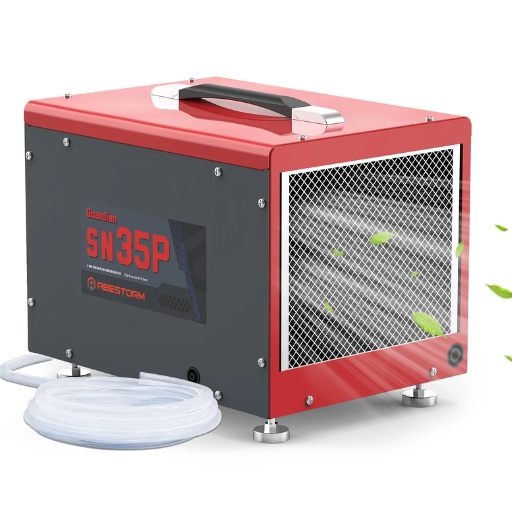
With the following key considerations in mind, you are sure to get the right crawl space dehumidifier:
Size and Capacity: Assess the size of your crawl space and get a dehumidifier tailored to the square footage. Some models also have higher pint capacities which are best for larger spaces and especially damp areas.
Humidity Control: Maintenance is simpler with a device that has an adjustable humidistat because you will be able to set the preset humidity and the device will maintain it.
Energy Efficiency: For effective moisture control without incurring extra costs, pick a dehumidifier that is certified for Energy Star.
Drainage Options: A model with a built-in pump or a continuous drainage system would be more effective as they limit the need for manual emptying of water.
Durability and Build Quality: Models designed to work in crawl spaces are ideal because they tend to be high moisture areas so choosing a build that is corrosion resistant is important.
Noise Levels: Prioritize quieter models for less interference if noise is a concern.
Considering these features will help you identify a dehumidifier that will protect your home by keeping the spaces dry while avoiding moisture-related concerns.
What Features Should You Look for in the Best Crawl Space Dehumidifier?
When selecting the best crawl space dehumidifier, it’s vital to evaluate features that enhance efficiency, durability, and overall functionality. Below are some key attributes that stand out when comparing top-performing models:
- Capacity to Remove Moisture: The dehumidifier’s ability to remove moisture is critical. High-performing models typically remove between 50 to 90 pints of water per day, depending on the size of the space and humidity levels. For larger or extremely damp crawl spaces, select units rated for high capacity to effectively manage moisture.
- Energy Efficiency: Look for units with an Energy Star certification, which ensures they meet strict energy efficiency guidelines. For example, efficient models can reduce energy usage by up to 30% compared to non-certified alternatives, cutting down on electricity costs over time.
- Compact Design with Powerful Airflow: Crawl spaces often have limited headroom, so compact dehumidifiers with streamlined designs work best. Despite their size, some models boast airflow rates exceeding 200 Cubic Feet per Minute (CFM), ensuring even distribution of air to cover every corner of the space.
- Automatic Humidity Control: Advanced dehumidifiers feature built-in hygrometers and digital displays for real-time monitoring and automatic adjustments. Maintaining an optimal indoor humidity of around 45-50% becomes effortless with these features, preventing over-drying or excessive moisture.
- Durability and Anti-Corrosion Materials: Quality crawl space dehumidifiers are constructed with heavy-duty, corrosion-resistant materials to endure humid or extreme conditions over years of use. Stainless steel or coated components are often preferred for this purpose.
- Drainage Options and Convenience Features: Look for units with a continuous drainage option to eliminate the need for frequent manual emptying. Many top-tier models also include built-in pumps for greater installation flexibility, allowing drainage even in areas without gravity-driven flow.
- Noise Levels: Since some crawl spaces are located close to living areas, prioritize quiet models with noise outputs typically below 55 decibels, ensuring minimal disruption. Advanced units often feature insulated housings to further reduce sound.
- Air Filtration Capabilities: Many modern dehumidifiers include washable or replaceable air filters that improve indoor air quality by trapping dust, allergens, and mold spores. Regular maintenance can promote better air flow and prevent clogs.
- Controls and Connectivity: Wi-Fi-enabled models allow for remote operation and monitoring through smartphone apps, giving you the convenience to adjust settings anytime, even when you’re away from home.
Taking into account these features ensures that you select a crawl space dehumidifier that not only meets moisture control needs but also provides lasting performance and energy efficiency. Investing in the right unit can greatly improve the health of your home by protecting it from mold growth, wood rot, and other structural issues.
Is a Whole-House Dehumidifier a Better Option?
Choosing between a whole-house dehumidifier and a standalone crawl space unit depends on your specific needs and the conditions of your home. Whole-house dehumidifiers are designed to manage humidity across an entire home, making them a more comprehensive solution for consistent humidity control. These systems integrate seamlessly with your HVAC and typically cover large spaces, which can range from 2,000 to 5,000 square feet, depending on the model.
One key advantage of whole-house dehumidifiers is their ability to maintain optimal indoor humidity levels year-round, reducing the likelihood of mold, mildew, and allergen buildup across multiple rooms. Recent reports indicate that maintaining relative humidity levels between 30% to 50% can improve both air quality and occupant comfort, which whole-house systems are adept at achieving. Additionally, they are often more energy-efficient in larger homes compared to operating multiple standalone units, potentially lowering energy costs over time.
However, whole-house dehumidifiers often come with higher upfront costs, including installation. Depending on the model, prices can start from around $1,500 to $3,000, excluding professional installation fees, which can add another $500 to $2,000. Yet, the long-term benefits of improved air quality, reduced repair costs from dampness-related damage, and even extended HVAC lifespan may outweigh the initial expense for many homeowners.
Ultimately, a whole-house dehumidifier is better suited for those seeking a comprehensive, set-it-and-forget-it solution to manage moisture levels throughout their entire home. It is essential, however, to assess your specific needs, the size of your living space, and your budget before making a decision.
How Do Pint Capacity and PPD Impact Performance?
Pint capacity and PPD (pints per day) are critical metrics that directly influence the performance and efficiency of a dehumidifier. Pint capacity refers to the total amount of moisture a dehumidifier can extract from the air over a day under ideal conditions, while PPD indicates its overall moisture-removal capability in real-world scenarios, which may vary based on factors such as humidity levels, room temperature, and air circulation.
For example, a 50-pint dehumidifier is generally capable of removing 50 pints of water from the air under AHAM (Association of Home Appliance Manufacturers) conditions—defined as 80°F and 60% relative humidity. However, in environments with higher humidity, such a unit may actually remove more moisture, as the air contains more water vapor. Conversely, in drier environments, the PPD rate may be lower.
Smaller-capacity units, such as 20 or 30-pint models, are ideal for spaces like bathrooms or smaller rooms where moisture levels are manageable. On the other hand, larger units with 70-pint capacities or higher are more appropriate for basements, oversized living spaces, or densely humid climates. Studies have shown that using a dehumidifier with a capacity mismatched to the space can lead to energy inefficiency or insufficient moisture removal, impacting both indoor air quality and operational costs.
Ultimately, knowing your space’s size and level of humidity is essential for selecting a unit that balances energy efficiency, performance, and cost-effectiveness. Leveraging these specifications ensures that your home stays dry and mold-free, while also optimizing the overall operation of the dehumidifier.
Is Encapsulation Necessary Before Installing a Dehumidifier?
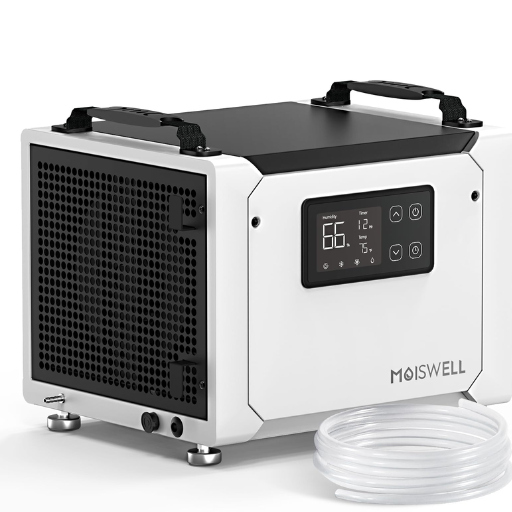
Encapsulation is not always necessary before installing a dehumidifier, but it can significantly improve the unit’s efficiency in certain situations. For areas like crawl spaces or basements, encapsulation helps seal out moisture and reduce how much the dehumidifier has to work. If excess moisture is entering from the ground or walls, encapsulation creates a barrier, ensuring the dehumidifier focuses on maintaining optimal humidity levels rather than combating persistent external moisture. Assess the condition of the space—if there are noticeable leaks, dampness, or exposed earth, encapsulation is highly recommended before installation.
What Are the Benefits of Crawl Space Encapsulation?
Crawl space encapsulation offers a wide range of benefits that significantly improve the efficiency, health, and durability of your home. One of the most notable advantages is the reduction of moisture levels, which helps to prevent mold and mildew growth. According to experts, high humidity in crawl spaces can lead to wood rot and structural damages over time, but encapsulation creates a dry and stable environment, protecting wooden beams and other materials from decay.
Another key benefit is improved indoor air quality. Studies indicate that up to 50% of the air in your home originates from the crawl space. By eliminating moisture and sealing out harmful contaminants like dust, allergens, and radon gas, encapsulation promotes a healthier living environment for you and your family.
Encapsulation also contributes to energy efficiency. By sealing gaps and cracks, it helps to regulate indoor temperatures and reduce the strain on HVAC systems, leading to lower energy bills. Homeowners who invest in this process often experience energy savings of 15-20%, making it an environmentally friendly and cost-effective solution.
Additionally, crawl space encapsulation can enhance your home’s resale value. Prospective buyers often view a well-maintained crawl space as a sign of proper home care, and a dry, encapsulated space can serve as a strong selling point. This improvement is particularly appealing in regions with humid climates, where moisture issues are more prevalent.
By protecting your crawl space with encapsulation, you also deter pests such as termites and rodents, which are attracted to dark, damp areas. The barrier created by encapsulation not only keeps moisture at bay but also blocks these unwanted intruders, safeguarding your home from potential infestations.
Overall, crawl space encapsulation is a proactive investment that safeguards your home from moisture-related issues, enhances livability, and boosts long-term value.
Can You Install a Dehumidifier in a Crawl Space Without Encapsulation?
Yes, you can install a dehumidifier in a crawl space without encapsulation, but the results may be limited in effectiveness. Without encapsulation, the crawl space remains exposed to constant moisture intrusion from the soil, outside air, and nearby plumbing systems. Installing a dehumidifier in such an environment can help reduce some of the moisture in the air, but it will continually have to work harder to combat incoming dampness from uncovered surfaces and open vents.
Studies show that uncovered soil in a crawl space contributes significantly to high humidity levels, often exceeding 70%. This can overwhelm a dehumidifier, leading to increased energy consumption and wear on the unit. Furthermore, without a vapor barrier sealing off moisture sources, the dehumidifier becomes a temporary solution that doesn’t address the root cause of the problem.
For better efficiency, pairing a dehumidifier with proper encapsulation creates a controlled environment. Encapsulation prevents the continuous flow of moisture into the space, allowing the dehumidifier to operate optimally. While a dehumidifier alone can show some improvement, it’s unlikely to deliver the same level of protection or efficiency as when combined with encapsulation methods.
What Are the Benefits of a Crawl Space Dehumidifier?
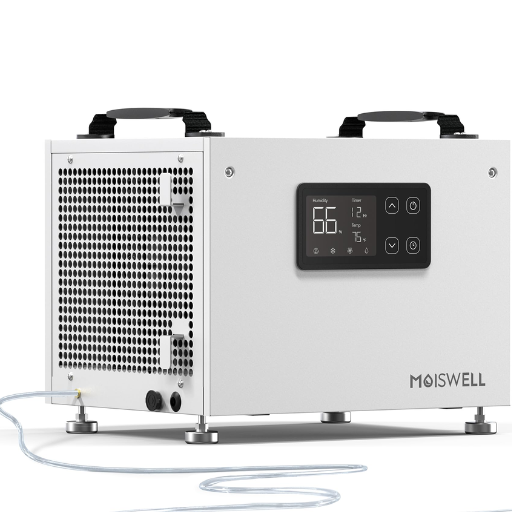
A crawl space dehumidifier offers several key benefits that help maintain a healthier and more efficient home environment:
- Moisture Control: It prevents excess moisture buildup, reducing the risk of mold, mildew, and rot in the crawl space.
- Improved Air Quality: By limiting damp conditions, a dehumidifier helps improve overall indoor air quality, benefiting respiratory health.
- Structural Protection: Reducing moisture levels helps protect wooden beams, insulation, and other materials in your crawl space from damage or decay.
- Energy Efficiency: A drier crawl space can improve the efficiency of your HVAC system, lowering energy costs.
- Pest Prevention: Dry conditions are less attractive to pests such as termites and rodents, keeping your home safer and more secure.
How Does It Improve Air Quality and Prevent Mold Growth?
When we reduce excess moisture in the crawl space, it directly improves air quality by minimizing the chance for mold spores and allergens to circulate within the home. By keeping the environment dry, we create unfavorable conditions for mold growth, which is a major source of indoor air pollution. This means healthier air for you and your family, as well as a safer, more comfortable home overall.
Does It Help with Moisture Control and Water Damage?
Yes, it absolutely helps with moisture control and water damage. By reducing humidity levels and addressing potential water intrusion, we can effectively prevent condensation, wood rot, and structural issues caused by excess moisture. This proactive approach protects the integrity of the home and saves on costly repairs in the long run.
What Role Does It Play in Reducing High Humidity?
Reducing high humidity plays a crucial role in maintaining a healthier and more resilient home environment. Dehumidification systems, proper ventilation, and moisture barriers work together to regulate indoor conditions. High humidity can create a breeding ground for mold, dust mites, and bacteria, and studies indicate that keeping indoor relative humidity levels between 30-50% significantly minimizes these risks. Additionally, reducing excess humidity improves air quality and enhances comfort, as it prevents that sticky, clammy feeling often associated with damp conditions.
Modern systems are particularly effective at tackling humidity, utilizing advanced sensors and energy-efficient components to adapt to fluctuating moisture levels in real time. For example, installing a whole-home dehumidifier can extract gallons of water from the air daily, depending on your local climate and indoor conditions. This consistent regulation not only protects occupants’ health but also preserves furniture, flooring, and structural elements by decreasing the likelihood of warping, rot, or water-associated damage. These solutions ensure the environment stays within optimal humidity thresholds, making homes both safer and more comfortable over time.
Reference Sources
-
Energy-Efficient Management of Mechanical Ventilation and Relative Humidity in Hot-Humid Climates – Discusses cost differences and considerations for dehumidifiers in crawl spaces.
-
Measured Crawlspace Conditions Under Manufactured Homes – Explores crawl space conditions and the impact of dehumidifiers on cost and complexity.
-
Moisture Problems in the Home – Discusses the effectiveness and expense of dehumidifiers for moisture control in crawl spaces.
Frequently Asked Questions (FAQs)
Q: Why do I need a dehumidifier in my crawl space?
A: Installing a dehumidifier in your crawl space helps manage humidity levels, preventing mold growth, wood rot, and structural damage. It also improves air quality and protects your home from moisture-related issues.
Q: What is the cost of a crawl space dehumidifier installation?
A: The cost of installing a crawl space dehumidifier can vary, typically ranging from $1,000 to $2,500. This includes the price of the unit and the installation fee. Additional features like an internal condensate pump may increase the cost.
Q: How do I know if my crawl space needs a dehumidifier?
A: If you notice signs of excess moisture, such as musty odors, mold growth, or condensation, it’s likely your crawl space needs a dehumidifier. Regular monitoring of crawl space humidity can also indicate the necessity of a dehumidifier.
Q: What type of dehumidifier is best for a crawl space?
A: Choosing the right dehumidifier depends on your crawl space size and moisture levels. A commercial dehumidifier is typically recommended for larger spaces or severe moisture issues. Brands like Aprilaire offer reliable options.
Q: Can I install a crawl space dehumidifier myself?
A: While DIY installation is possible, hiring crawl space repair experts ensures proper setup and functionality. Professional installation helps avoid common pitfalls like incorrect sizing or improper drainage.
Q: What additional equipment might be needed with a crawl space dehumidifier?
A: Depending on your setup, you might need a sump pump or an internal condensate pump to manage water drainage efficiently. These components help maintain optimal crawl space dehumidification.
Q: Is it better to put a dehumidifier in the basement or crawl space?
A: If your home has both a basement and a crawl space, focus on the area with higher moisture levels. Basements often benefit from dehumidifiers, but a crawl space dehumidifier can be crucial if the space isn’t encapsulated.
Q: How does crawl space size affect dehumidifier choice?
A: The crawl space size impacts the capacity of the dehumidifier needed. Larger spaces may require a more powerful unit to effectively manage humidity levels. It’s important to match the dehumidifier capacity with your crawl space dimensions.
Q: What should I do if my dehumidifier won’t work properly?
A: If your dehumidifier won’t function correctly, check for common issues like power supply problems, clogged filters, or incorrect settings. Regular maintenance and consulting with crawl space repair experts can resolve persistent issues.
Q: How does a crawl space dehumidifier protect your home?
A: A dehumidifier for crawl space reduces moisture, preventing damage to wooden structures, insulation, and HVAC systems. It helps maintain a healthier living environment and prolongs the lifespan of your home’s components.

